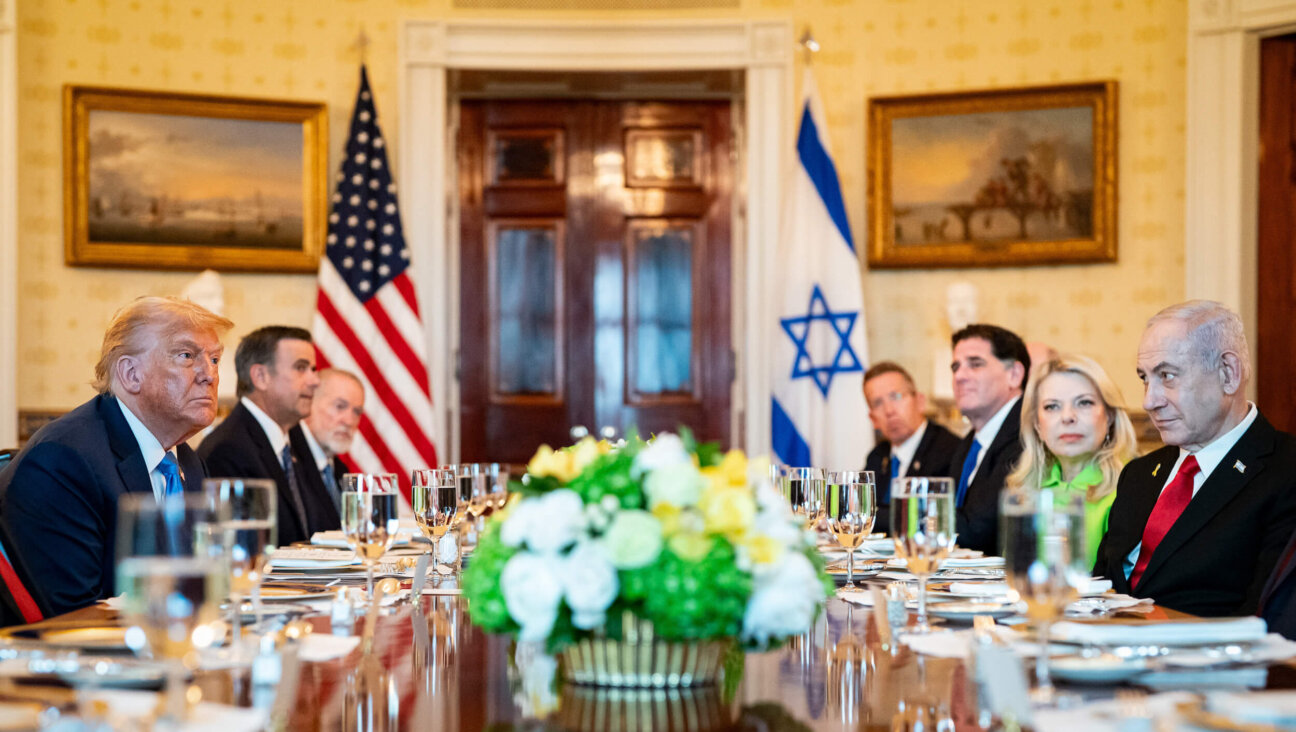Conversion Is Not An Outreach Strategy
For more than a decade, a group of Jewish communal leaders has been arguing that the challenge of intermarriage can only be met by a policy of converting non-Jewish partners. They cite statistics indicating that among children raised in interfaith families in which the non-Jewish partner has not converted, only a small minority identify as Jews.
Advocates of this approach assume that the major roadblock to conversion is that rabbis do not invite or pressure people to convert. At the same time, they also contend that the Reform and Reconstructionist movements have obviated the need for conversion in countless cases by their decision to embrace patrilineal descent as a standard of Jewishness.
Few of these leaders, however, have bothered to ask intermarried couples about their feelings, even though such an approach has precedent in rabbinic law. Outreach, as the Mishnah instructs, is about reaching out to where people are: “Go out and see what the people are doing” (Berakhot 45a).
Let us be absolutely clear: We are all for conversion and welcome anyone who wants to join us. But if we are serious about a conversion strategy, then perhaps we should lower the barriers that currently exist for those who would be motivated to join our community. We can begin by offering all requirements for conversion free of charge, including instruction, books and materials, the process of circumcision and use of ritual baths. Second, we can make sure that courses are offered frequently and at schedules that are convenient to potential converts.
However, it should be equally clear that conversion is not an outreach strategy. If outreach is indeed about going to where people are, then to ask people to convert before they have developed a sense of belonging in the community — one of what psychologist Abraham Maslow, in his famed “hierarchy of needs,” deemed necessary steps to be taken before self-actualization can be realized — is just not the right approach.
Nor can it be the covert goal of programming to reach people on the periphery. Once people have been given the opportunity to imbibe the waters of Torah, let them be motivated to join us on their own. Indeed, the same population surveys that proponents of conversion cite in support of their position demonstrate the viability of such an approach.
Conversion alone does not provide the only credible surety of Jewish continuity in cases of intermarriage. Rather, the real key to Jewish identity of the home and of the offspring of intermarriages seems to be whether the parents — including the non-Jewish parent — engage in Jewish pursuits. When such pursuits are common, from the lighting of Friday night candles to attendance at a synagogue to participation in programs of all types under Jewish auspices, then the identity of the offspring is overwhelmingly Jewish.
To focus on conversion alone as a panacea to the challenge of interfaith marriage and Jewish continuity is mistaken. Our real task is to create a community of meaning worth joining. No amount of pressure or manipulation can force this process along.
For many Jewish communal leaders, the conversion approach is simply part of a three-part strategy to reduce interfaith marriage in our communities: prevention, conversion, outreach. However, prevention is a flawed approach simply because interfaith marriage is a reflection of an American social reality and not a challenge facing the Jewish community alone. It is therefore hardly surprising that there are already more than 1 million interfaith families within the ambit of the American Jewish community.
To be sure, the future of the Jewish community depends on reaching these families. But outreach, not conversion, is the best strategy to draw people, born Jewish or not, from the periphery into a revitalized Jewish community. If we can create an open Jewish community through effective outreach — a community that is welcoming, embracing and meaningful — then people will want to join our ranks. Manipulation and coercion has never been an effective method.
Our community has become so focused on whether or not the community should open its doors to those who have intermarried that we have forgotten that people make decisions based on what they deem best for themselves and their families, rather than on what they regard as best for a community. For these persons, appeals to continuity and survival will not provide decisive grounds for joining the Jewish community.
Rather, our community has to demonstrate — through experience — why living a Jewish life will add meaning to their lives and the lives of their children. We must be prepared to do this, and we must do so in a spirit that Rabbi Zvi Hirsch Kalischer articulated in the 19th century when he labeled children born of gentile mothers and Jewish fathers as holy offspring. He argued that the community should do everything in its power to facilitate the entry of such children into the Jewish community, for he contended that there “was always the possibility that great leaders of Israel will spring from among them.”
The vast majority of interfaith families, 80%, have not found their way into our synagogues. We need to adopt the spirit of Kalischer and forge a supportive path for them, rather than expecting them to make quantum leaps to engagement and affiliation, let alone conversion.
Then, once they are inside, we had better make sure that our institutions provide meaningful and joyous experiences for them. Otherwise, they will continue to vote with their feet — away from the organized Jewish community, which has not always been sufficiently welcoming to them in the first place.
David Ellenson is president of Hebrew Union College-Jewish Institute of Religion. Rabbi Kerry Olitzky is executive director of the Jewish Outreach Institute.




















